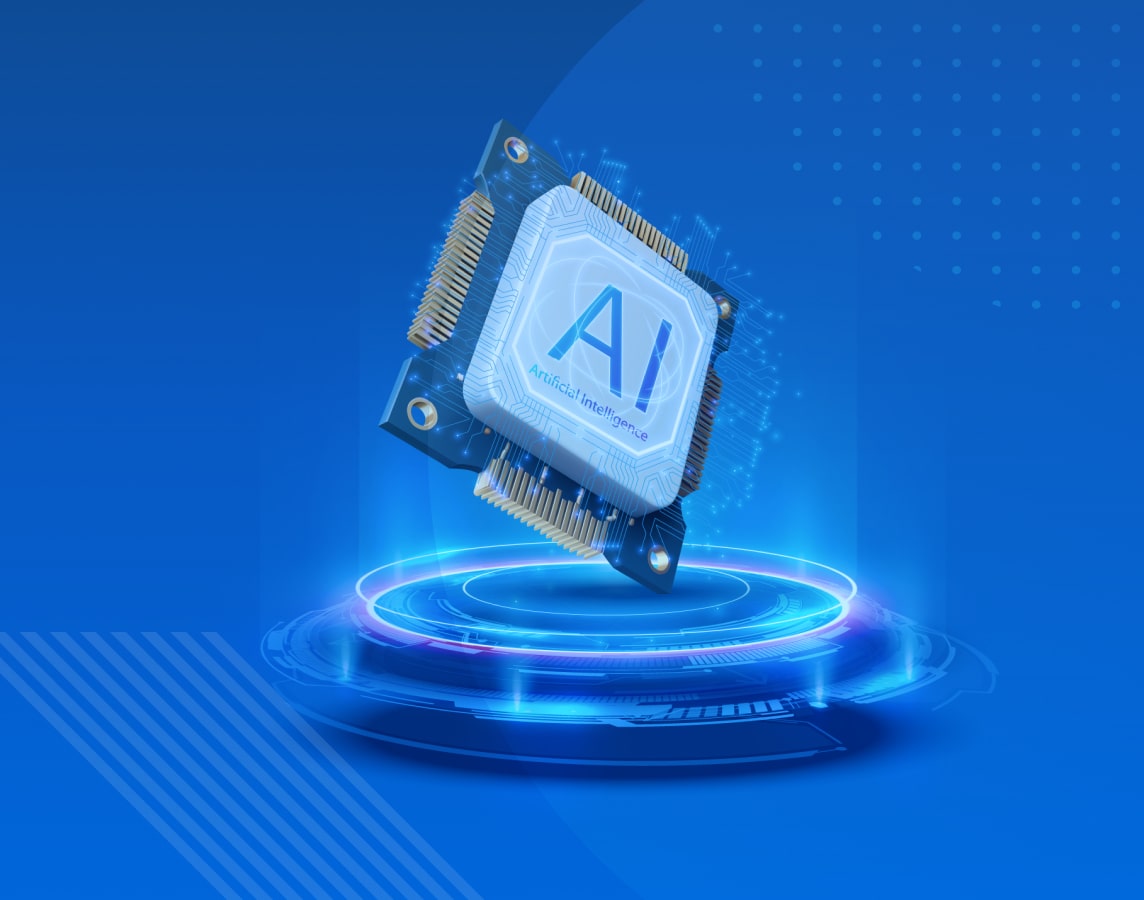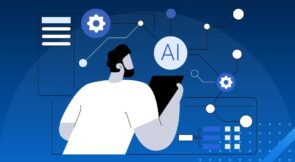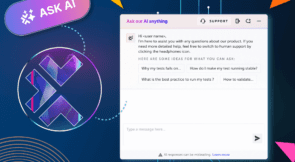Technology has radically changed throughout history from rudimentary tools and simple machines to sophisticated systems that shape nearly every aspect of our modern life. From the Industrial Revolution’s steam engines to the Information Age’s computers and the Internet, each technological leap has brought profound improvements in productivity, communication, and daily living. Today, we stand on the brink of a new era defined by AI-driven development, where artificial intelligence and machine learning are revolutionizing industries, enhancing human capabilities, and creating possibilities previously limited to science fiction. This shift toward AI-driven solutions marks a significant milestone in technological evolution, promising unprecedented efficiency, innovation, and transformation in how we work, live, and interact with the world.
During the recent Atlassian Team24 event, Tricentis leaders Eldar Kravetsky, a Senior Director of Software Engineering, and Marat Strelets, a Senior Principal Architect, gave a talk titled Testing in an AI-Driven Development Era. The talk focused on the future of testing using AI as a force multiplier. They discussed how artificial intelligence changes how developers create software systems and how traditional testing must change to deliver at the speed of business. Let’s dig deeper into how AI fundamentally changes the development and testing landscape and answer: Is AI the final technology frontier?
AI Transforming the Role of Developer
AI-driven development has significantly enhanced the capabilities and productivity of software developers, as evidenced by recent research from McKinsey & Company. One of the most notable improvements is in the area of code documentation. Traditionally, documenting code has been time-consuming and is often neglected due to time constraints. This leads to downstream issues in maintaining and updating the software. However, with the advent of generative AI, developers can now automate much of this process, increasing speed and efficiency by up to 50%. AI tools can analyze code, generate comprehensive documentation, and even provide real-time updates, ensuring that documentation remains accurate and up-to-date, enhancing code maintainability, and ensuring that future developers can read and understand the original intent of the software.
AI has proven to be even more useful in generating code. McKinsey & Company’s research indicates that generative AI can increase developer speed and efficiency by an impressive 65%. AI-driven code generators can write substantial portions of code based on high-level descriptions or specific inputs from developers. This capability accelerates the initial development phase and reduces the likelihood of human error, as AI systems can adhere to best practices and coding standards. By automating routine coding tasks, developers are free to focus on the more complex and creative aspects of software development, leading to faster project completion, higher-quality outcomes, and more innovative solutions to the compelling needs of their business.
Code refactoring, an essential yet often arduous task, has also seen remarkable improvements through AI-driven development. According to McKinsey & Company, AI tools can enhance efficiency in refactoring by up to 70%. Refactoring involves restructuring existing code to improve its readability, maintainability, and performance without altering functionality. AI-powered tools can identify areas of code that require refactoring, suggest optimizations, and even implement changes autonomously. This ensures that code remains clean and efficient, reducing the developers’ time on routine maintenance tasks. As a result, development teams can deliver more robust and scalable software solutions while minimizing technical debt and enhancing overall code quality.
In this new AI-driven development world, the developer’s role becomes one of the orchestrators and creators, not the hands-on keyboard coders. This allows the developer to think creatively and embrace the art of the possible rather than concentrating on coding structures and lines of code. Artificial Intelligence becomes the assistant to the creative force rather than the creative force itself. A common term we are now hearing regarding AI assistance is Co-Pilot. When a co-pilot is on board, the pilot can focus on flying the plane while the co-pilot monitors the system, engages supporting systems, and supports the pilot’s intent. Tricentis has focused on leveraging AI to enable developers and testers to achieve their creative intentions.
Enhancing, not Replacing the Role
AI-driven development is improving the software industry by enhancing, not replacing, the roles of developers and testers. While AI tools automate many routine and repetitive tasks, they empower developers to focus on more complex and creative aspects of their work. For instance, AI can generate boilerplate code, automate code reviews, and suggest optimizations, allowing developers to devote more time to designing innovative features and solving challenging problems. This synergy between AI and human developers leads to more efficient workflows, higher productivity, and more advanced and usable software products.
AI enhances testers’ capabilities in the testing space by automating repetitive and time-consuming tasks such as regression testing, bug detection, and performance monitoring. AI-driven testing tools can rapidly execute vast numbers of test cases, identify defects, and even predict potential areas of failure, thereby increasing the accuracy and efficiency of the testing process. However, human testers remain indispensable for designing test strategies, interpreting complex test results, and understanding the nuanced requirements of end-users. By handling the more mundane aspects of testing, AI allows testers to concentrate on ensuring the software achieves the highest quality, usability, and user experience standards.
AI tools facilitate better collaboration between developers and testers. Automated frameworks can provide immediate feedback to developers, enabling them to address issues early in the development cycle. This continuous integration and continuous deployment (CI/CD) approach, supported by AI, fosters a more agile and responsive development lifecycle. While AI is a force multiplier, human expertise remains crucial for interpreting AI-generated insights, making strategic decisions, and ensuring the software aligns with project goals and user expectations. AI is a powerful part of the modern development strategy, augmenting the skills and capabilities of developers and testers rather than rendering them obsolete.
One of the things that most resonated with me from the Tricentis presentation was the concept: You bring human intelligence; AI brings learned intelligence. Having competent and senior-level developers and testers is more crucial than ever. The ability to imagine a creative solution to a customer problem separates good and great companies. Good companies solve specific customer problems but do not necessarily innovate. Some of us remember the days when development automated manual processes as our value proposition. We took Excel documents and turned them into applications. While there was enormous value in automating these manual processes, it wasn’t business reimagined; it was business improved.
Great companies find innovative solutions to customers’ most compelling problems and help those companies capture their market and achieve business objectives. With AI, developers can imagine creative solutions that move the business into the future. AI releases each individual’s pent-up potential and allows them to focus forward.
AI-Driven Development Needs AI-Driven Testing
As AI-driven development revolutionizes software creation, the necessity for AI-driven testing becomes increasingly evident. The complexity and sophistication of AI-generated code require equally advanced testing methodologies to ensure reliability, security, and performance. While effective for conventional software, traditional testing approaches may fall short of adequately addressing AI systems’ dynamic and evolving nature. AI-driven testing tools can adapt to these complexities, offering automated and intelligent testing solutions that keep pace with rapid development cycles and continuously changing software environments. This synergy between AI-driven development and AI-driven testing ensures that the software meets functional requirements and adheres to high quality and robustness standards.
AI-driven testing brings several advantages that are crucial for validating AI-driven development outputs. One significant benefit is handling large volumes of test cases efficiently. AI-powered testing tools can generate, execute, and analyze thousands of test cases in a fraction of the time it would take a human tester. This capability is critical for regression testing, ensuring new changes do not introduce errors into existing functionality. By leveraging machine learning algorithms, AI-driven testing analysis tools can identify patterns and predict potential defects, enabling more targeted and effective testing strategies. This proactive approach helps catch issues early in the development process, reducing the cost and effort associated with fixing bugs later in the software lifecycle.
Marat and Elder have highlighted that most defects do not occur during the “happy path” flow, where users interact with the application as intended, but rather in edge cases where the application’s robustness is truly tested. AI-driven testing tools are particularly adept at addressing these challenges by simulating various scenarios and edge cases that might be difficult or time-consuming for manual testers to cover comprehensively. AI tools can automatically generate test cases that explore the boundaries and unexpected interactions within the application, ensuring that the software performs reliably under all conditions. By systematically uncovering potential weaknesses and vulnerabilities, AI-driven testing enhances the overall robustness and resilience of the application, providing a higher level of confidence that it will function correctly in diverse and often unpredictable environments.
Tools like Tricentis Test Management for JIRA (TTM) enable your testing team to leverage AI to rapidly generate comprehensive sets of tests directly from the test scenarios they define. They can also use self-healing capabilities for test scripts as updates are made to the application. One exciting capability that AI brings to testing is the ability to reverse-engineer test scripts. Very often, test scripts lack the level of documentation needed to understand the writer’s original intent. With AI, new team members can get a detailed test description and its intended purpose. This improves understandability, reusability, and maintainability. These capabilities enable the tester to keep up with the pace of AI-driven development and support the continuous flow of value to end users.
Autonomy and Beyond
During their presentation, Marat and Eldar hypothesized that AI autonomy would be the next frontier in development-driven artificial intelligence (AI). AI autonomy is the ability of machines to perform tasks and make decisions without constant human intervention. Autonomous AI systems can understand their environment, draw conclusions, and adjust their actions based on the results. This level of independence goes beyond automation, as autonomous AI agents can learn from their own experiences instead of being given instructions by a human developer.
With autonomy as the next frontier, developers and testers can look forward to automatically generating high-quality applications directly based on the definition of business requirements. AI engines will operate in the background, listening for new requirements, and will automatically define, build, and test applications based on architectural frameworks, quality, and robustness standards. Developers and testers will define the frameworks that the AI will use and analyze the results for accuracy.
The role of developer and tester will continue to evolve from hands-on keyboard to intellectual creator and orchestrator. Just as the development of 30 years ago automated manual processes and eliminated the need to send paper documents through interoffice mail systems, AI autonomy will eliminate the need for developers and testers to feed information to the AI system to generate software. Developers and testers will be able to focus on the operation of software development rather than the development of code and test cases. This will require that developers and testers continuously improve and upgrade their skill sets.
Staying Relevant in an AI-Driven Environment
If you are currently a developer or tester, you may be wondering how you stay relevant in this rapidly changing world that AI is disrupting. Some of you may even approach AI with a healthy dose of skepticism and maybe even fear. During their talk, the Tricentis team referenced a Stephen Hawking quote: “Success in creating AI would be the biggest event in human history. Unfortunately, it might also be the last unless we learn how to avoid the risks.” There are risks associated with AI. Companies must consider biases and learning errors that can cause issues within AI models and the correctness and accuracy of insights and decisions they generate. Stephen Hawking took it a bit further in an interview for WIRED magazine. He said, “I fear that AI may replace humans altogether. If people design computer viruses, someone will design AI that improves and replicates itself. This will be a new form of life that outperforms humans.”
So, how do you, the individual, help address the risks of AI for your company and society overall? Spend time learning about ethical and responsible AI. Understand that, as a developer, your job is to define systems that ensure data privacy, security, and compliance. As a tester, your job is to define scenarios that verify and validate the same. Ensure that you have continuous assessment and improvement strategies that continue to refine your AI models and capabilities, and then validate those improvements are adequate. Ensure that the designs that you are creating are user-obsessed and accessible to all your customers. Finally, you should become a lifelong learner and continue to improve your understanding and command of AI trends and approaches. Know how to leverage AI as a tool rather than a crutch. If you don’t master AI, it will end up mastering you, leaving you behind. To stay relevant, be your organization’s “go-to” expert on AI and master the tools available.
The Final Frontier Is Always Over the Next Horizon
We started this discussion by asking: Is AI the final technology frontier? We have seen many significant technological advancements in our history, from electricity and the internal combustion engine to putting men on the moon. Artificial Intelligence is a societal disrupter that is, at a minimum, equal to those significant historical events. Some might argue that it is more extensive as it enables us to reach beyond our finite minds into infinite possibilities. I agree that AI is a multiplying force that will propel mankind at an ever-accelerating rate. This force will unleash the ability to create in ways we never thought possible and enable mankind to achieve results that improve outcomes and the lives of every human on our planet. While today, we are in the early stages of an AI-driven existence, we will continue to learn new ways to apply AI to our lives. So, is AI the final technology fronteir? No, but it will pave the way for remarkable discoveries and advancements.
I recommend checking out the Tricentis talk to gain some insights into how they are approaching leveraging AI to improve testing (https://www.youtube.com/watch?v=MqK-D77Brj8). Today, we focus on improving the effectiveness and efficiency of developers and testers using AI-driven development & testing; tomorrow, who knows what we will achieve?



